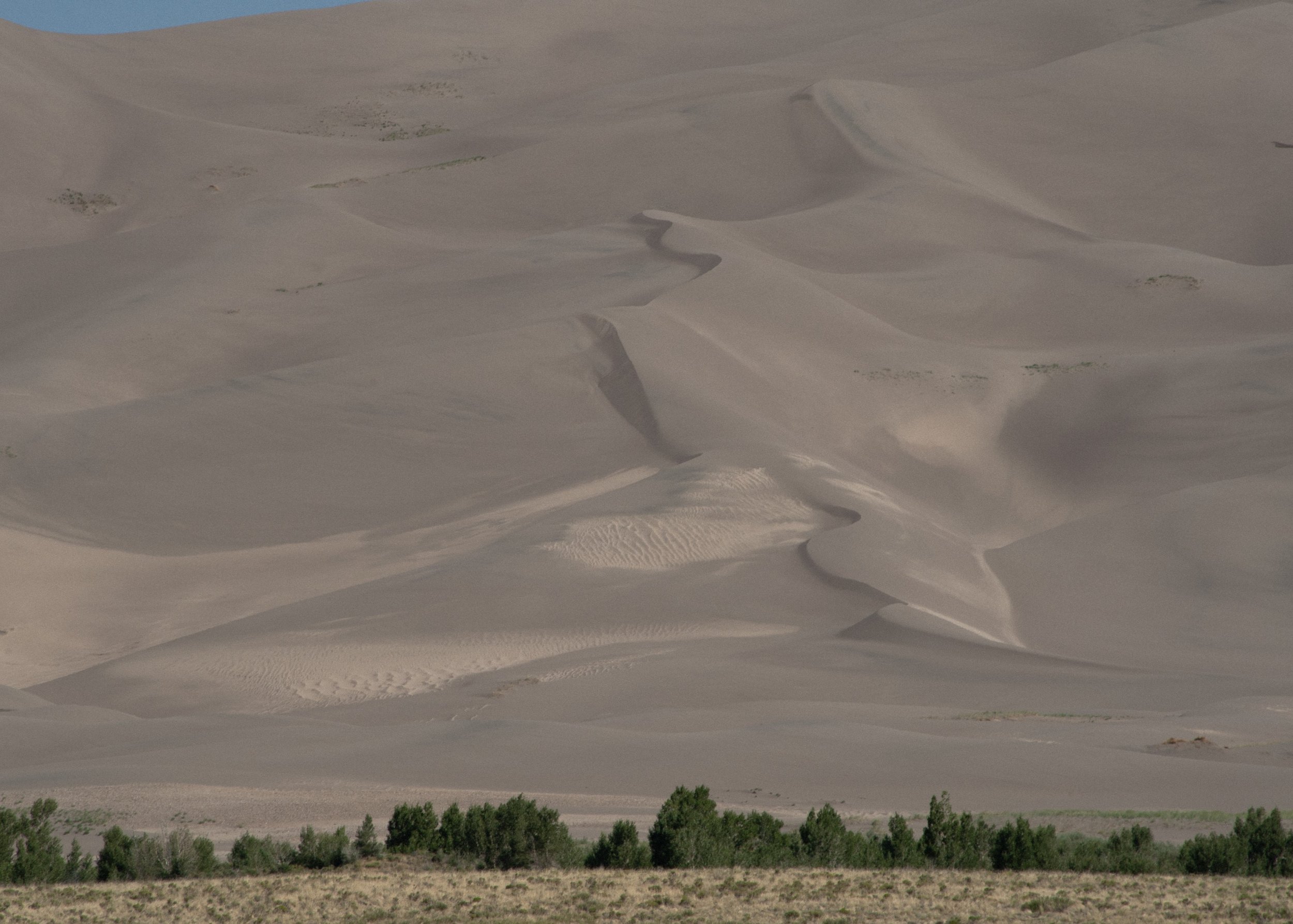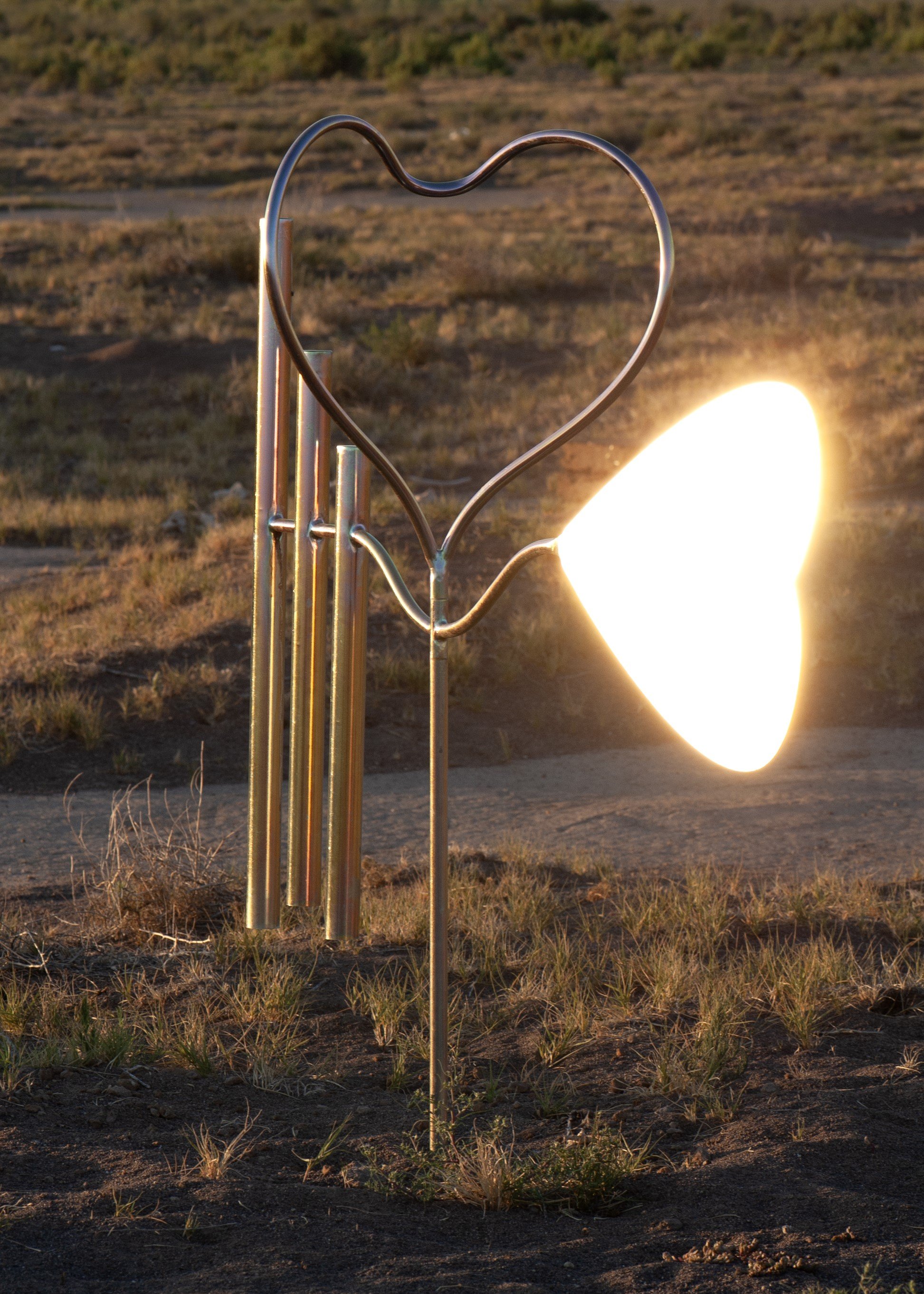Orisons Earthwork: Imagining A Climate Future
Photos courtesy of Marguerite Humeau and Black Cube Nomadic Art Museum.
Marguerite Humeau reimagines futures in her art. She sculpts Holder of Wasp Venom and Guardian of Ancient Yeast, drawing from the past — from the lost and forgotten — to create beautifully imagined, compassionate artworks.
Her newest project, titled Orisons, is an exercise in deeply, compassionately understanding an ecosystem that is a haven for all who live there. It is built on the ancestral land of the Ute People and the Navajo (Diné) people in the San Luis Valley on the fallow farm land donated by Jones Farm Organics.
“The land is the artwork,” shares Humeau. This 160-acre earthwork celebrates the flora and fauna as heroes of a post-climate world that live in the extreme conditions of the San Luis Valley.
Including 84 interactive sculptures inspired by the vegetation and native animals of the San Luis Valley, Orisons is an artwork entwined at every step with the land that hosts it. It opened on July 29, 2023 and closes June 30, 2025. Entry is free, though donations are appreciated, and exact addresses and directions will be provided upon making a reservation.
The sculptures draw their inspiration from the vegetation and animals of the San Luis Valley. Visitors are invited to lay on the wings of Sandhill Cranes, to imagine a new future in their flight path. Other sculptures draw from the wind and the vegetation of the valley, creating whistling, mystical spaces “that take you through different meditations around resilience, care, transformation, the transience of existence, the edges between life and death and the acknowledgement of the whole being the sum of its parts and the inhabited solitude that makes you feel alone in the vastness of a very rich, entangled web of life,” explains Humeau. The adaptability and resilience of the life of the San Luis Valley is something she deeply admires and weaves throughout Orisons.
Humeau says that her art is “acupuncture at the scale of a landscape.” Her work reflects caring for the land and helping it reconnect every form of life that has lived on it, is living on it or will live on it, “with every other form of life that has existed in the past, present or future.”
It is an art centered around finding haven and healing in a world drastically changed by climate change and learning from the land itself to create futures in extreme environments.
In order to understand the land, Humeau met with many different experts, from the Department of Agriculture, thunderbird and rainmaking ritual specialists, local community groups “and maybe most importantly geomancers who gave a ‘reading’ of the land, like a palm reading but at the scale of the landscape,” she shares.
From the geomancers, she learned about specific individuals who have died and seem to be trapped on the land — for example, the eldest female of a human group who tried to settle on the land in the 1850s may be trapped in the northwest corner.
“There are groups that have also been seen by the geomancers of Ancestral Puebloans who have been crossing the land,” she explains. “In particular, their presence is felt in the southeast area, above a part of the soil that has been transformed into a soil crust over the years.”
This knowledge creates deeply compassionate and compelling art that centers the land and all who live there. This time and research have not just given her a perspective but a multitude of perspectives.
“How do we think or live or exist like a bird, like a Russian thistle?” Humeau inquires. In other words, how is our own anatomy, our mind, reflected in the world around us?
In Orisons, Humeau is looking to the native plants and animals to be “our guides to teach us to navigate our own futures” in a world deeply influenced by climate change. It is an artwork taking a piece of land that we “as humans have used as a site for extraction for many years and transforming it into a site of reverence” where the animals and plants will show us the way into the future.
It is art deeply entwined with the climate crisis, with the natural world, that shows visitors that “in order to survive on this planet, we need to merge within the greater whole of life.” It is art that imagines a future.
Originally published in the Fall 2023 issue of Spoke+Blossom.










